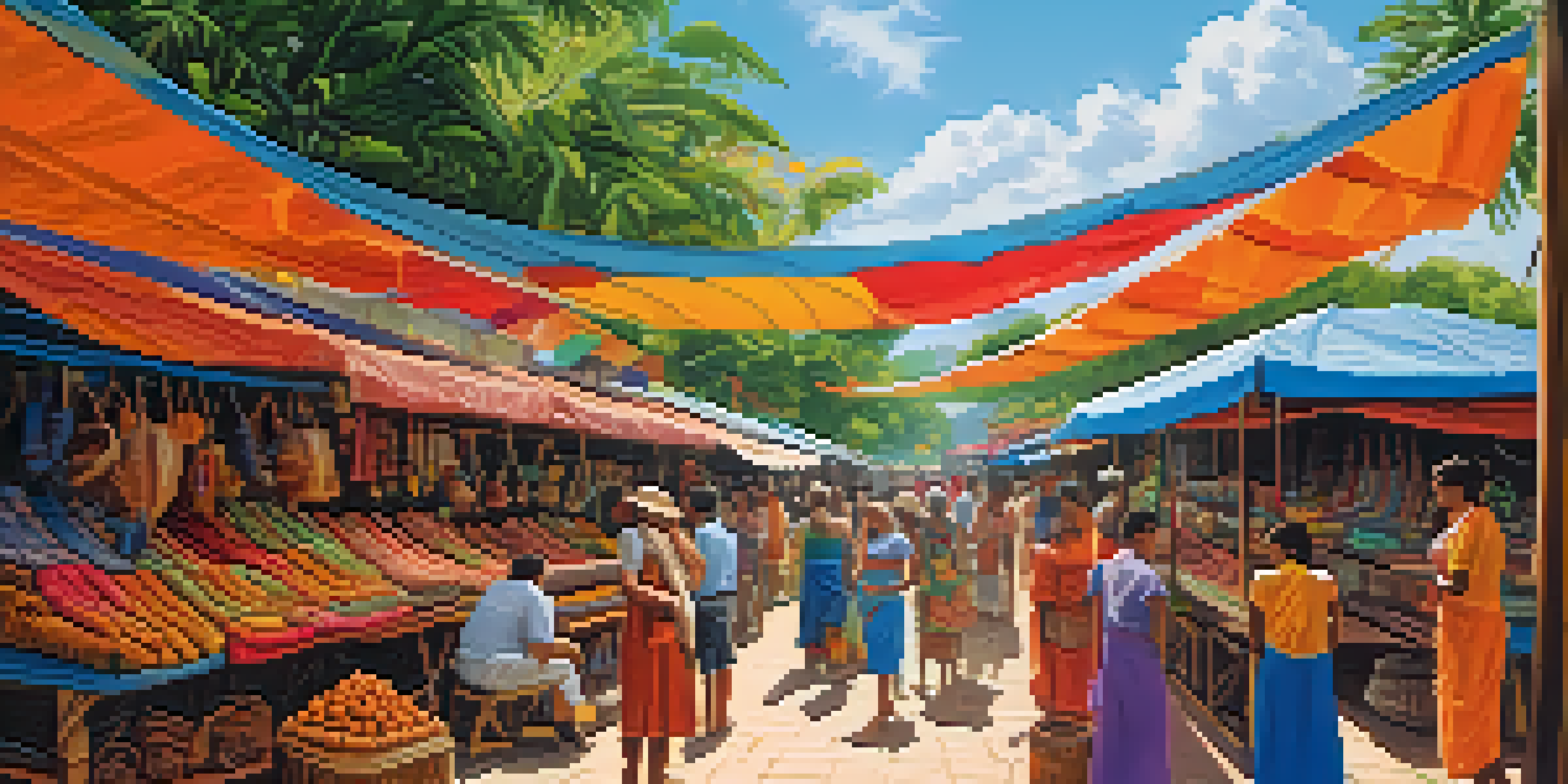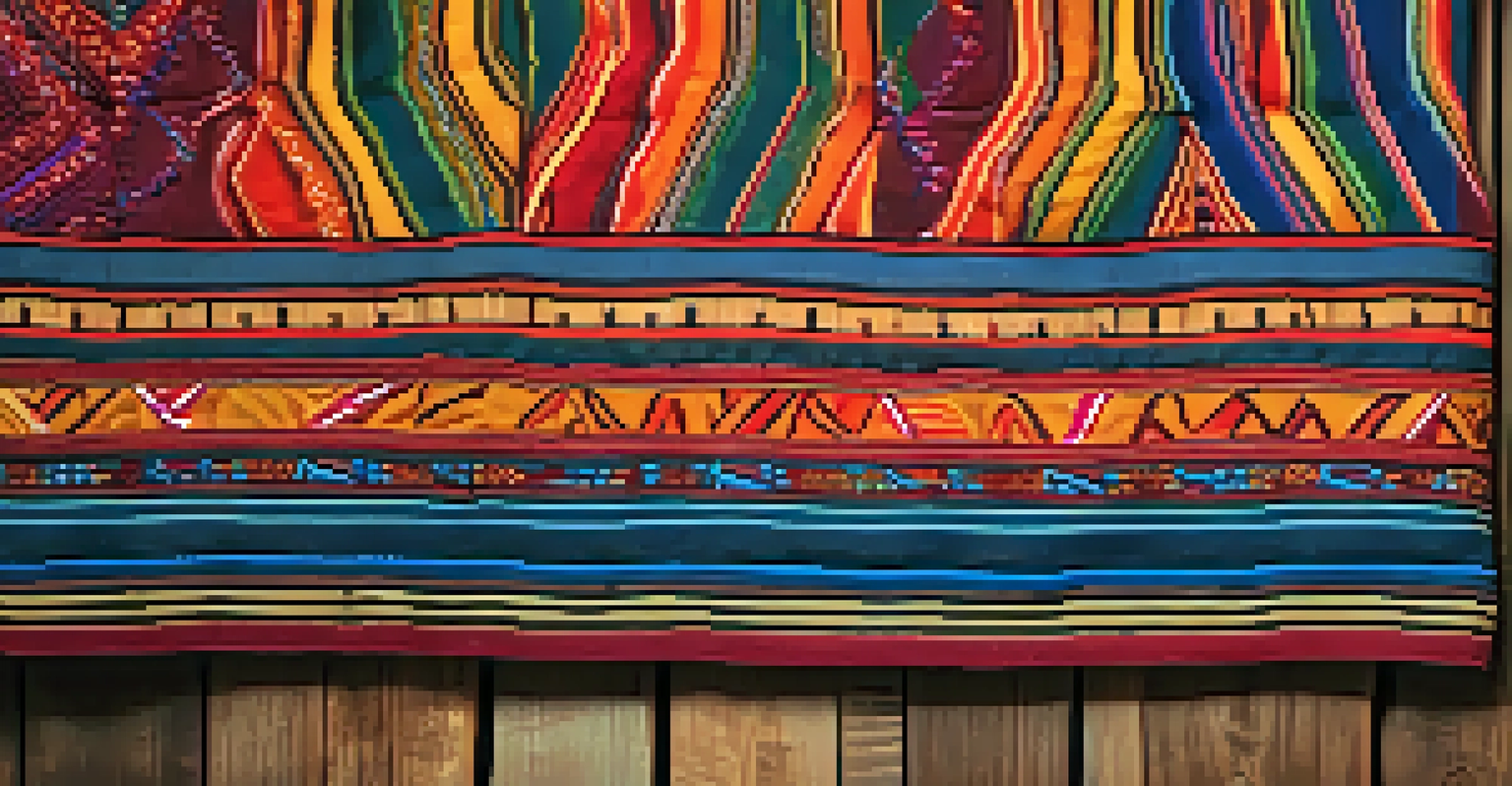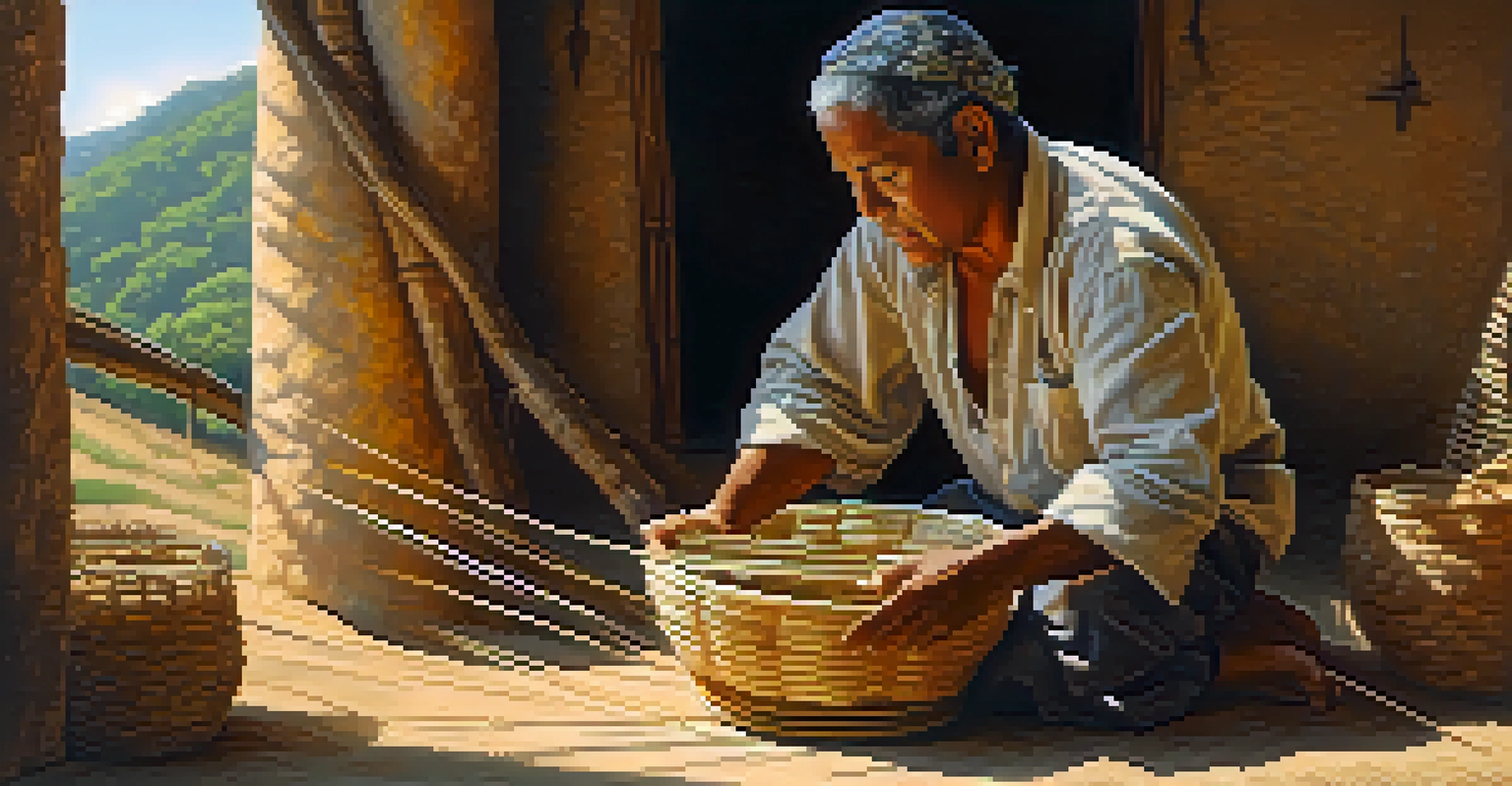Traditional Brazilian Handicrafts: A Journey Through Culture

An Introduction to Brazilian Handicrafts and Their Significance
Brazilian handicrafts are not just beautiful items; they are a reflection of the country’s diverse culture and history. Each piece tells a story, often rooted in the traditions of indigenous peoples, African heritage, and European influences. These crafts embody the spirit of the regions they come from, making them a vibrant part of Brazil’s identity.
Craft is not just what you do; it’s who you are.
From pottery to weaving, the variety of handicrafts found across Brazil is astonishing. Each state boasts its unique styles and materials, showcasing local resources and artistry. This diversity not only highlights the creativity of Brazilian artisans but also preserves age-old techniques that have been passed down through generations.
Understanding these handicrafts gives us a glimpse into Brazilian life and values. They often symbolize community, family, and a connection to nature. As we explore further, we’ll see how these elements come together to create a rich tapestry of cultural expression.
The Influence of Indigenous Cultures on Handicrafts
Indigenous cultures have played a pivotal role in shaping Brazilian handicrafts. Their knowledge of natural materials, such as seeds, wood, and fibers, has led to the creation of intricate jewelry, baskets, and textiles. These crafts often incorporate traditional techniques and patterns that have been used for centuries, serving as a testament to their enduring legacy.

For example, the art of weaving is deeply rooted in many indigenous communities. The use of vibrant colors and geometric designs creates stunning textiles that tell stories of the land and its people. This connection to nature is essential, as many artisans believe that their work honors the spirits of their ancestors.
Cultural Reflection in Handicrafts
Brazilian handicrafts are deeply rooted in the country's diverse culture, telling stories of indigenous, African, and European influences.
By supporting these traditional crafts, we help preserve the cultural heritage of indigenous peoples. The sale of these artworks not only provides economic opportunities for artisans but also ensures that their stories and skills are passed on to future generations.
African Heritage and Its Impact on Brazilian Crafts
The influence of African culture in Brazil is profound, especially in the realm of handicrafts. This heritage is reflected in various forms, from the vibrant colors of textiles to the intricate designs of ceramics. African artisans brought with them unique techniques and materials, which have melded beautifully with local traditions.
Art is the most beautiful of all lies.
One striking example is the art of capoeira, a martial art that combines dance and music. This cultural practice often inspires various crafts, including musical instruments and decorative items. These pieces not only serve practical purposes but also celebrate the rich history and resilience of African heritage in Brazil.
By exploring these crafts, we can better appreciate the diversity that enriches Brazilian culture. Supporting African-inspired handicrafts enables artisans to thrive while keeping their traditions alive in a contemporary context.
The Role of Artisans in Preserving Culture
Artisans are the heart and soul of Brazilian handicrafts, serving as guardians of their cultural heritage. Their dedication to their craft ensures that traditional techniques are not lost to time. Many artisans spend years honing their skills, often learning from family members or community elders.
In addition to creating beautiful works of art, these artisans play a vital role in their communities. They often teach their skills to younger generations, fostering a sense of pride and connection to their roots. This passing down of knowledge is crucial for maintaining cultural identity in an ever-changing world.
Artisans Preserve Cultural Heritage
Local artisans play a crucial role in maintaining traditional techniques and passing down cultural knowledge to future generations.
By supporting local artisans, we contribute to the preservation of these invaluable traditions. Every purchase of a handmade item helps sustain not only the artisan’s livelihood but also the cultural narratives they embody.
Exploring the Diversity of Brazilian Handicrafts
Brazil is a vast country, and its handicrafts reflect this diversity. From the intricate lacework of the Northeast to the vibrant pottery of Minas Gerais, each region has distinct styles and materials. Exploring these differences is like taking a journey through the country’s rich cultural landscape.
In the North, for instance, artisans craft stunning pieces from natural fibers like buriti and palm leaves, creating everything from baskets to hats. Meanwhile, the South is known for its ceramics, often featuring bold colors and unique shapes. This regional variation not only showcases artistic expression but also highlights the local resources and traditions.
Understanding this diversity enriches our appreciation for Brazilian handicrafts. It reminds us that each piece is more than just a product; it’s a reflection of the community and culture from which it originates.
Sustainable Practices in Traditional Handicrafts
Sustainability is an essential aspect of many traditional Brazilian handicrafts. Artisans often use locally sourced materials and age-old techniques that minimize environmental impact. This connection to the land is vital, as it ensures that their practices are both eco-friendly and culturally relevant.
For example, many artisans in Brazil utilize natural dyes made from plants, fruits, and minerals, resulting in vibrant colors that are not harmful to the environment. This approach not only preserves the integrity of the craft but also promotes a sustainable lifestyle that honors both nature and tradition.
Sustainability in Craft Practices
Many Brazilian artisans prioritize sustainable practices by using locally sourced materials and eco-friendly techniques to create their crafts.
By prioritizing sustainable practices, Brazilian artisans help protect their environment while creating beautiful, meaningful products. Supporting these crafts means supporting a way of life that values both artistry and ecological responsibility.
Connecting with Brazilian Handicrafts: Ways to Get Involved
There are numerous ways to connect with and support Brazilian handicrafts, whether you're a collector, traveler, or simply an admirer. Visiting local artisan markets is a fantastic way to experience the craftsmanship firsthand and engage with the artisans. This personal connection adds a layer of meaning to your purchases.
Additionally, many online platforms now showcase Brazilian handicrafts, making it easier for you to find unique pieces from the comfort of your home. By purchasing directly from artisans or fair trade organizations, you can ensure that your support goes directly to those who create these beautiful works.

Lastly, spreading the word about Brazilian handicrafts through social media or community events not only raises awareness but also fosters appreciation for these cultural treasures. Every small action contributes to the preservation and promotion of this vibrant art form.